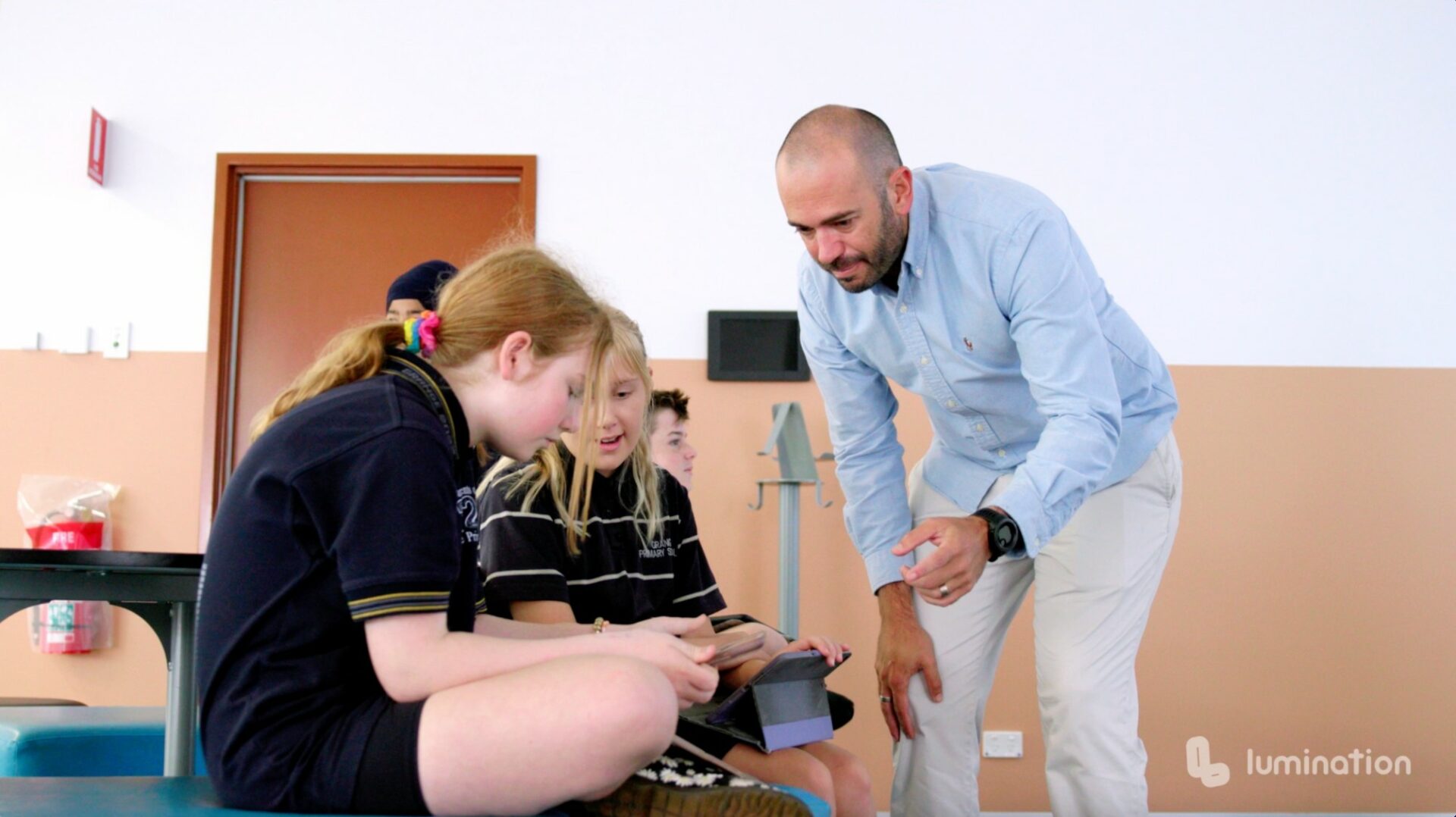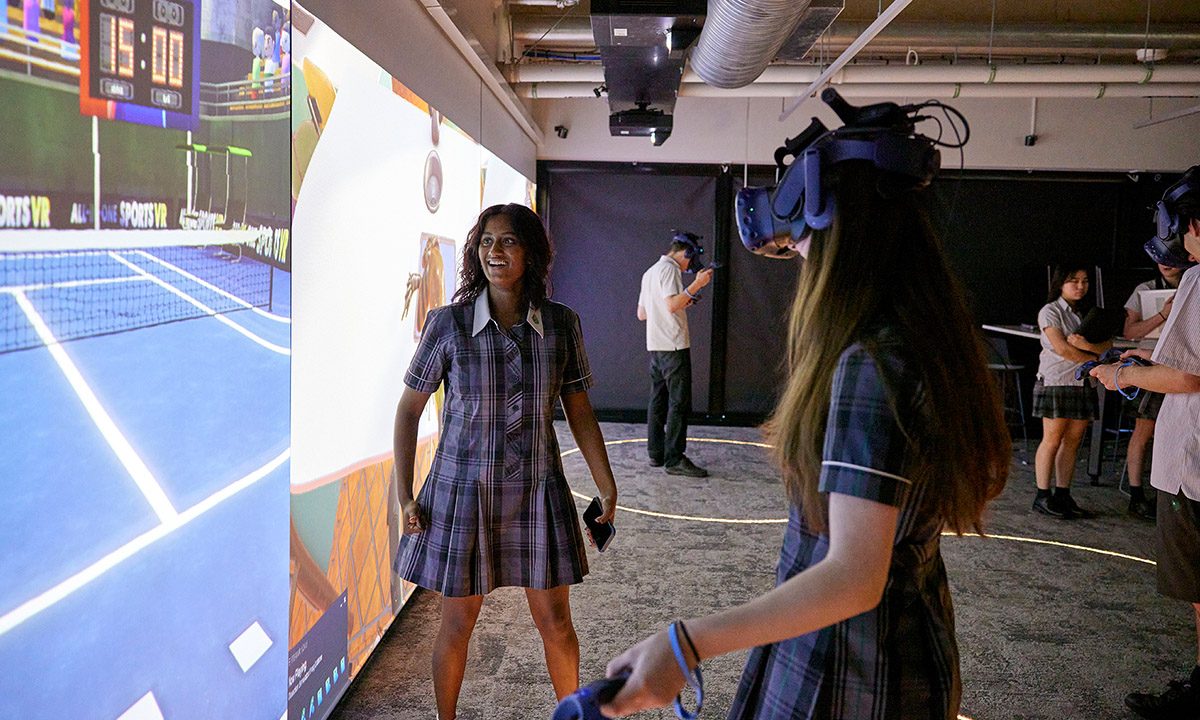Author: Lumination
Date: 12th Jan 2023
Explore the key advantages of virtual and augmented reality in teaching and learning
Virtual and augmented reality are transforming teaching and learning methodologies. VR and AR are delivering experiences and opportunities that were once considered impossible to achieve in the classroom environment. Read on as we explore why VR and AR in the classroom is becoming so important to the education system.
1. Bridging the gap between education and employment
Today’s jobs market is almost unrecognisable from that of 20 years ago, or even just a couple of years ago. It’s diversifying rapidly, leading to a wealth of different opportunities, but also confusion. Young people can easily feel overwhelmed by so many choices and might not recognise how their own skills measure up against those required in the modern workplace.
When using VR and AR in the classroom, learners can experience these job roles first-hand, with virtual job exploration experiences like Work Window. With technology on their side, students enjoy a more effective transition from education to employment.

2. Developing key skills
This is one of the core tenets of our approach to VR and AR in the learning environment. While the classroom has always been vital in providing students with the skills they need in life, study and work, it is also inherently limited. Virtual and augmented reality removes these limitations, giving students the opportunity to build wide-ranging skill sets.
3. Improving engagement with key learning outcomes
“A picture is worth a thousand words,” as the adage goes, and there’s certainly some truth here. Studies have found that with visual and verbal-based learning, learners are up to 6.5 times more likely to retain key information compared to spoken lectures and text-based learning. This all comes down to engagement. The student’s brain is far more engaged by visuals — particularly in immersive environments like VR and AR — than by written and verbal communication. Key learning objectives are achieved efficiently and effectively.
Students at Grange Primary School in South Australia transcended the barriers of distance in their Geography unit, with a 155% increase in students who agreed it was ‘very true’ that “Geography is fun” within just 4 weeks of implementing immersive technology to the classroom.
“VR is fantastic. In our usual classrooms we usually use books and websites. When you’re using VR, you can see the world from your own classroom,” said Umaira, Year 6 student at Grange Primary.
4. Shifting from passive to active learning
Of course, VR and AR are about far more than just images. Students are not simply looking at pictures or watching videos, but are instead active participants in the learning experience.
From the same study mentioned above, we can see that active participation boosts knowledge retention even further. After three hours, knowledge retention rises from 80% with visual and verbal learning to 90% with participatory activities. After three days, knowledge retention increases from 65% to 70%, respectively. VR and AR are ideal for expanding the possibilities of active learning, helping students to eliminate boundaries and connect with key concepts from outside the classroom.

5. More opportunities for collaborative learning
Collaboration is something we’re very serious about at Lumination. When people think of VR and AR in the classroom, they often think of individual headsets and a personalised experience, but in fact, this is not the whole story. Students can work together within virtual and augmented reality environments, solving problems and working together in a way that increases mutual understanding and development. This is what our Lumination Learning Lab offering is designed to achieve.
In a broader sense, teachers can work with content producers and other educators to craft optimal experiences for students while remaining within the framework of the school curriculum.
6. Content creation and visualisation
VR/AR learning is not a passive experience. By its very definition, it is an active process, bringing students into the action. However, this active element can become even more vital to the process, as students gain the opportunity to build their own content. Using a range of different tech solutions, students create content and then visualise this content using the immersive virtual reality (IMVR) kit, supporting almost limitless variation in future lesson planning and development.
7. Building accessibility and supporting equitable learning
The Lumination team has worked directly with students and teachers at institutions like Suneden Specialist School, demonstrating just how useful VR and AR can be in supporting autism spectrum disorder students as they develop their skills and knowledge. ASD students, and other students with particular needs, require a different set of learning principles, and VR and AR technology sits at the very heart of this.
The implementation of immersive technology assists schools in creating accessible learning environments and get closer to achieving equitable outcomes for all students across Australia.

8. Growing empathy and understanding
In our work with Suneden, we also demonstrated how augmented and virtual reality teaching resources can increase empathy and understanding of autism spectrum disorders among non-ASD pupils and staff. This is critical in developing a more positive and accepting learning environment for all.
This increased empathy and understanding was also clear following our work at Goolwa Secondary College. After using VR and AR in the classroom to complete a task regarding ocean pollution and cleanup, students had a lot to say about the ecological issues facing the planet.
“It’s important we experience this,” Emily — a student at Goolwa — said, “so that we’re aware of what’s going on in our oceans, so that we know the consequences of what we’re using, like plastic.”
Other students were keen to highlight the positive aspects of VR and AR in general.
“I enjoy the experiences and I find myself being more empathetic,” said Vincent. “You find out what the problem is and how to solve it.”
Another student, Asher, pointed out how VR devices can help support people with lower levels of mobility and increase empathy with people in different situations. “It helps you experience what it’s like in someone else’s shoes,” he said.
9. Integrating seamlessly with existing frameworks
All these advantages come to nothing if the technology is beyond the reach of educators and institutions. This is why we have developed offerings like our Lumination Learning Lab to be as accessible as possible. To achieve this, we deploy a dedicated education team providing ongoing support to clients through implementation and integration, delivering technical assistance whenever required. This is supported by the automated LeadMe classroom management software, which allows swift transitions between traditional and VR/AR learning in the classroom environment.
Focusing on the BASICS
We believe using VR and AR technology in the classroom holds the key that unlocks the future of education, both in Australia and across the world. This is where our collaborative Lumination Learning Lab solution comes in, achieving the BASICS for our users.
This means:
B – Beyond the classroom learning opportunities
A – Accessible, equitable and empathetic learning
S – Skill development for all students
I – Increased engagement
C – Career opportunities and exploration
S – Seamless integration with existing systems and curricula
Get these BASICS right, and revolutionise education for teachers and students alike. To learn more, check out our case studies Introducing Goolwa’s Lumination Lab or exploring the Benefits of VR in Education: Adelaide Botanic High School.
Sign up for our newsletter to stay in the loop.



